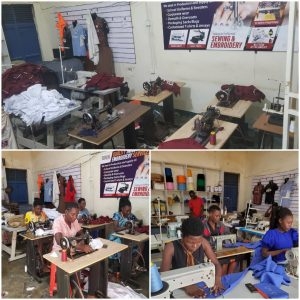In the vibrant tapestry of local economies, few threads weave together opportunity, tradition, and creativity as beautifully as tailoring. Far beyond the simple act of stitching fabric, the profession of tailoring holds immense potential to transform communities, uplift livelihoods, and foster economic resilience. Embracing and promoting tailoring as a viable profession is not just about fashion; it’s about empowering individuals and revitalizing local economies.

Tailoring is an ancient craft deeply rooted in tradition and culture. Across the globe, from bustling urban centers to remote rural villages, skilled tailors ply their trade, transforming bolts of fabric into garments that reflect personal style and identity. However, the significance of tailoring extends far beyond its cultural heritage; it is a dynamic force for economic growth and community development.
At its core, tailoring offers individuals the opportunity to harness their creativity and skills to generate income and support their families. Unlike many professions that require extensive formal education or specialized training, tailoring is accessible to a wide range of individuals, regardless of educational background or socioeconomic status. With dedication and passion, aspiring tailors can acquire the necessary skills through apprenticeships, vocational training programs, or self-directed learning, paving the way for meaningful employment and entrepreneurship.
By embracing tailoring as a profession, communities can unlock a myriad of economic benefits. Firstly, the establishment of tailoring businesses creates local employment opportunities, particularly in regions where formal job opportunities may be limited. Skilled tailors, seamstresses, and apprentices become valuable contributors to the local workforce, driving economic activity and fostering social cohesion.

Moreover, the proliferation of tailoring businesses stimulates ancillary industries and services, creating a ripple effect throughout the local economy. From fabric suppliers and wholesalers to boutique owners and garment retailers, the demand for materials and finished products generates a network of interconnected businesses, further amplifying economic growth. Additionally, as tailoring businesses flourish, they attract tourists and visitors seeking bespoke garments and unique cultural experiences, bolstering the local tourism sector and enhancing community pride.
Furthermore, tailoring as a profession promotes entrepreneurship and innovation, empowering individuals to launch their own ventures and pursue their creative visions. Whether operating from a small home-based workshop or a bustling storefront, tailors have the opportunity to cultivate loyal clientele, expand their businesses, and diversify their offerings. Through innovation in design, craftsmanship, and marketing, tailors can differentiate themselves in the market, driving competitiveness and sustainability.

Importantly, the economic impact of tailoring extends beyond financial prosperity; it also fosters social inclusion and empowerment, particularly for marginalized groups such as women, youth, and persons with disabilities. By providing equitable access to training and employment opportunities, tailoring promotes gender equality, youth empowerment, and the economic integration of vulnerable populations, thereby strengthening the social fabric of communities.
In conclusion, the promotion of tailoring as a profession and business is not merely a matter of aesthetics; it is a catalyst for socioeconomic development and community empowerment. By embracing the rich heritage and economic potential of tailoring, communities can unlock a tapestry of opportunities, transforming lives, revitalizing local economies, and weaving a brighter future for generations to come. Let us stitch together a stronger, more resilient future through the timeless art of tailoring.
Okoit lo’Aanyu.
CEO Teso Textiles


